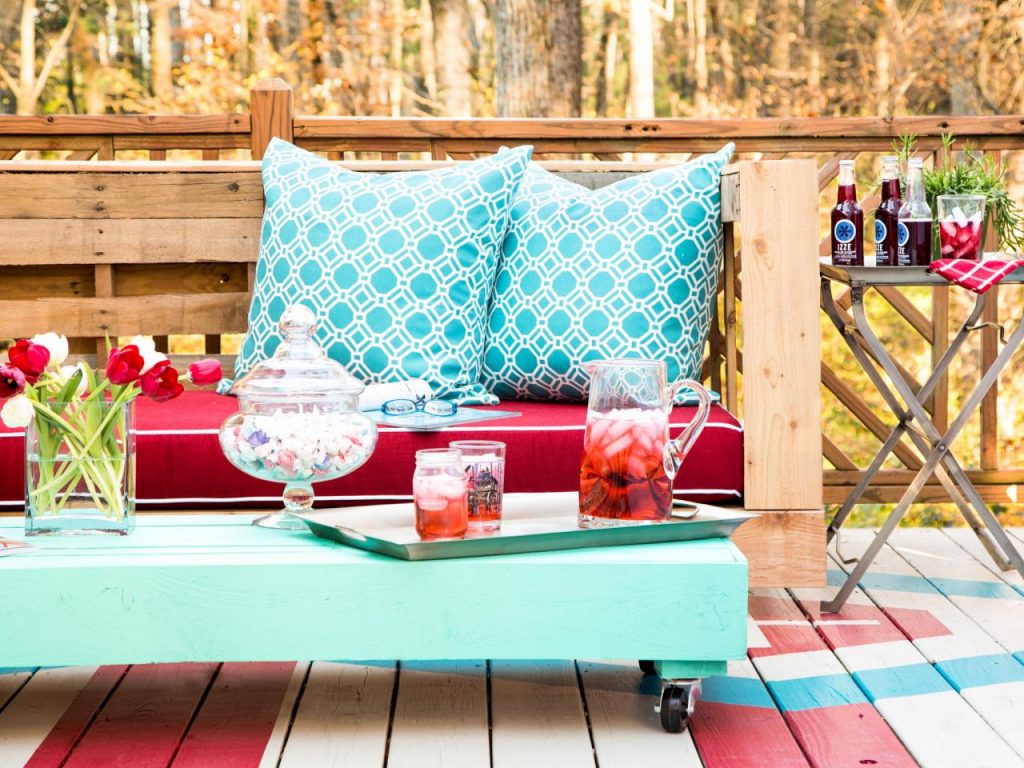Schefflera Plant - Comment Prendre Soin d'un Arbre Parapluie ?
Le schefflera est une plante d'intérieur populaire. Si vous en prenez bien soin, elle poussera magnifiquement pendant de nombreuses années. Les résultats surprennent même ceux qui possèdent déjà diverses espèces de plantes exotiques dans leur collection. Vous vous demandez comment prendre soin d'une plante parapluie ? Vous voulez savoir si elle a besoin de beaucoup de soleil ? Trouvez les réponses à ces questions et à d'autres dans le texte ci-dessous.
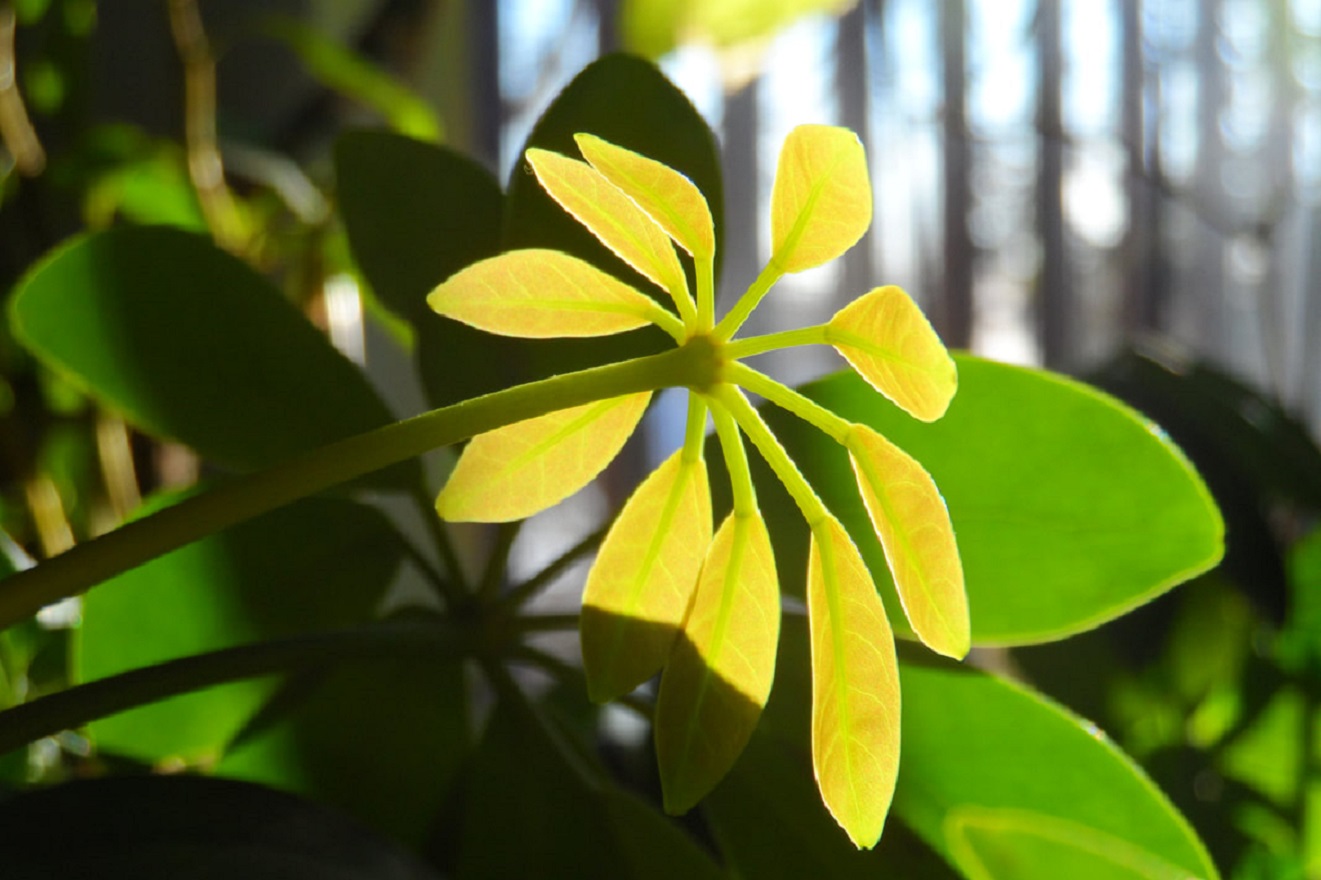
Schefflera - quelle sorte de plante est-ce ?
Le Schefflera, également connu sous le nom de arbre parapluie et arbre poulpe, est une plante extrêmement facile à cultiver. Elle appartient au groupe des plantes en pot avec un aspect buissonnant. À l’origine, elle est originaire d’Australie et de Nouvelle-Zélande. Elle peut atteindre une hauteur de 3 mètres lorsqu’elle pousse dans son habitat naturel. Dans les climats plus froids, il est généralement deux fois plus petit.
L’arbre parapluie est une excellente plante pour les chambres à coucher. Vous vous demandez pourquoi ? Principalement en raison de ses caractéristiques. Cette plante peut absorber les substances nocives qui polluent l’air.
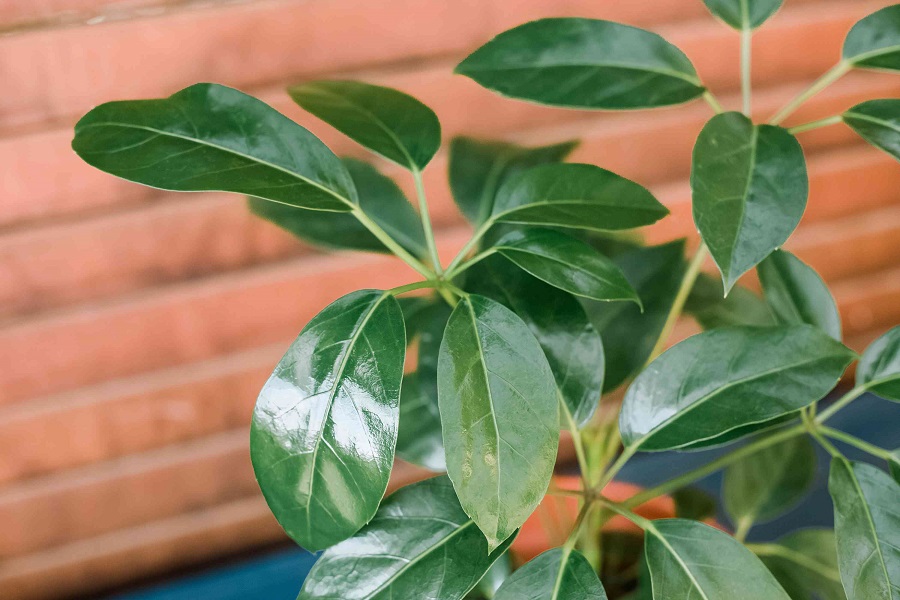
Types populaires d’arbre-parapluie
Il existe de nombreuses variétés de schefflera. Elles ne diffèrent que très peu les unes des autres Grâce à cela, vous pouvez décider du type à choisir pour qu’il s’adapte à l’intérieur où il va pousser. Les types d’arbres parapluie les plus populaires sont les suivants:
- arboricola,
- arboricola ‘Gold Capella’,
- arboricola ‘Janine’,
- arboricola ‘Trinette’,
- arboricola ‘Luseana’,
- alpina,
- actinophylla ‘Amate’.
La principale différence entre ces variétés réside dans leur hauteur. En outre, les couleurs et la taille de leurs feuilles peuvent également être différentes.
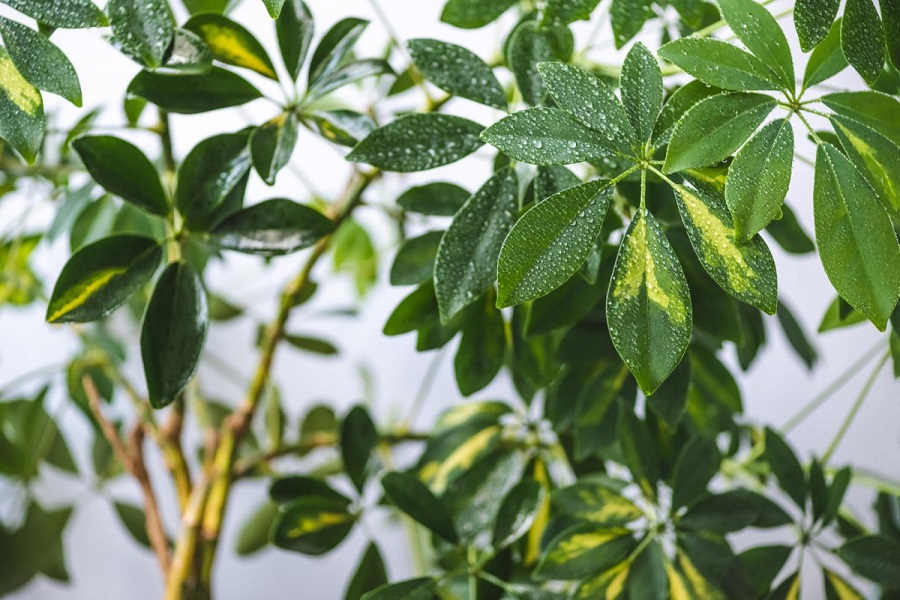
Schefflera plant - soleil ou ombre ?
Les arbres Schefflera ne sont pas très exigeants. Gardez à l’esprit qu’un arbre parasol exposé à une forte lumière développe des feuilles plus petites et des tiges plus courtes qu’une plante poussant à la mi-ombre.
Évitez de placer la plante en pleine ombre. Dans ce cas, il y a un risque que le schefflera perde toutes ses feuilles.
Lorsque vous choisissez un endroit, faites attention à un aspect important - le type de schefflera que vous possédez. Si ses feuilles sont tachetées, cela signifie qu’il préfère pousser au soleil.
La température optimale d’une pièce pour un arbre parapluie se situe entre 18 et 25 degrés Celsius (64,4-77°F). Veillez à maintenir une température tout aussi stable en hiver également - mais de préférence pas supérieure à 18°C. Une température inférieure à 12°C (53,6°F) peut entraîner la chute des feuilles de la plante.
Quel est le meilleur sol pour une plante parapluie ?
Pour cultiver un schefflera, il faut fournir des conditions de sol appropriées à la plante. Le sol du conteneur doit être très fertile et riche en humus. Elle doit également être perméable afin de ne pas accumuler l’eau dans le pot. En effet, la plante préfère un sol modérément humide. L’eau stagnante dans le pot pourrait nuire à l’arbre à poulpe.
Le pH du sol doit être légèrement acide. Vous pouvez préparer vous-même un mélange de terre ou en acheter un dans un magasin de jardinage. Cette dernière solution est la meilleure option pour les jardiniers débutants.
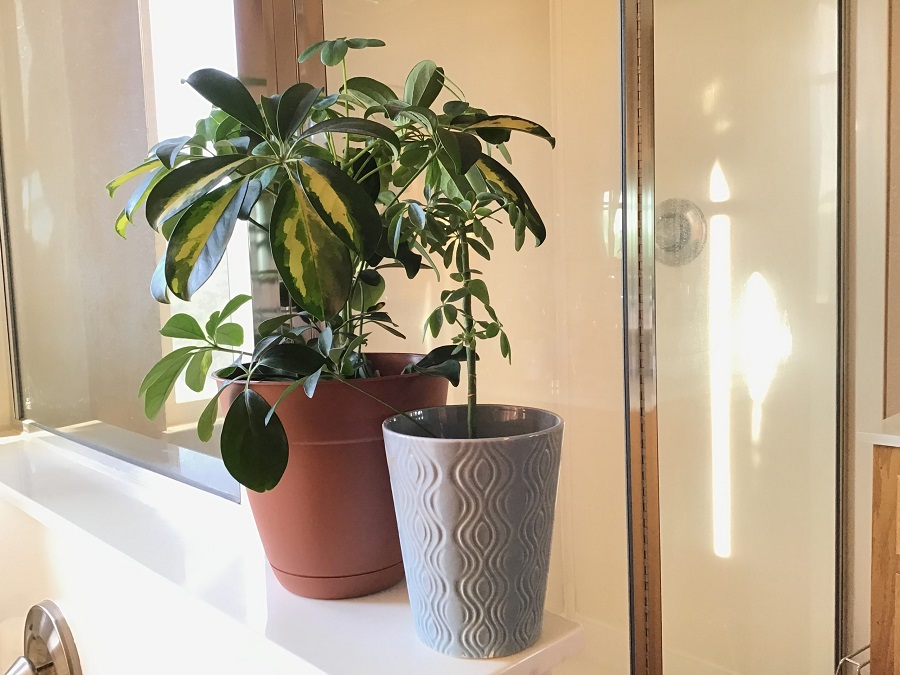
Plante parapluie - arrosage
Vous vous demandez comment arroser un schefflera ? La plante préfère un sol légèrement humide. Arrosez-la de manière éparse 2-3 fois par semaine. Ceci concerne l’entretien de l’arbre parapluie en été.
En hiver, vous pouvez limiter l’arrosage à une fois par semaine, mais veillez à ce que le sol ne soit jamais trop sec - si cela se produit, vous remarquerez des dommages sur les feuilles sous forme de petites bulles à la surface. Un arbre parapluie trop sec perd la couleur de ses feuilles - elles deviennent jaunes et tombent ensuite.
Un arrosage trop fréquent d’une plante schefflera peut causer des problèmes au niveau du système racinaire. Celles-ci peuvent commencer à pourrir, et les conséquences sont difficiles à inverser.
Soins aux arbres schefflera - alimentation
La plante parapluie nécessite d’être nourrie, surtout au printemps et en été. Utilisez un engrais liquide à plusieurs ingrédients lorsque vous arrosez la plante. Il suffit de nourrir la plante toutes les deux semaines. Un manque de nutriments nécessaires dans le sol peut être la raison pour laquelle les feuilles d’un arbre parapluie jaunissent.

Schefflera - propagation
Il existe deux méthodes pour propager un shefflera. Le bouturage du haut de la plante est la méthode la plus simple. La meilleure période pour ce type de propagation se situe entre mars et avril. Placez la bouture dans l’humidité et enveloppez-la dans du plastique.
La bouture a besoin de 4-6 semaines pour développer un système racinaire adéquat. C’est alors que vous pouvez la déballer et la planter dans un pot.
L’autre méthode prend beaucoup plus de temps. Trouvez une jeune pousse sur la plante et enlevez l’écorce d’une section de 10 à 15 centimètres. Pressez un peu de terre ou de mousse à l’endroit exposé et enveloppez le tout de papier d’aluminium. Vous pouvez fixer le papier d’aluminium avec une ficelle pour vous assurer qu’il ne tombe pas. Après quelques mois, des racines devraient apparaître sur la section exposée. Coupez la pousse à l’automne et plantez-la dans un nouveau pot.
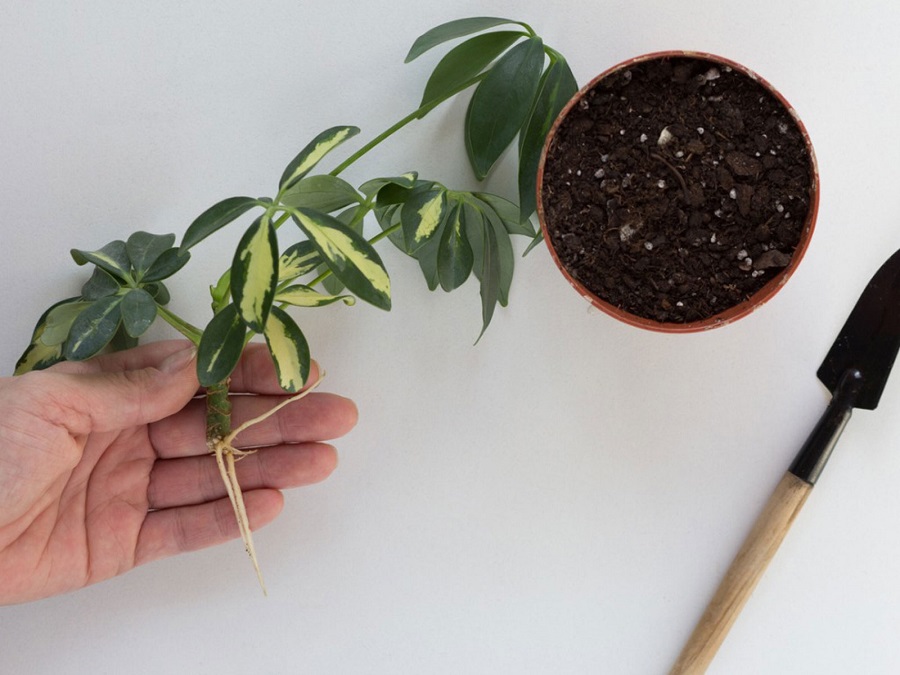
Le schefflera a-t-il besoin d’être taillé ?
Grâce à une taille habile, un arbre parapluie peut développer beaucoup de branches. La taille doit être effectuée au printemps ou en été. Si vous voulez façonner la plante à votre goût, veillez à commencer une taille régulière lorsque votre arbre-pieuvre est jeune. Ne coupez que les sommets des branches supérieures. Il est intéressant de noter que la plante schefflera (surtout l’arbre parapluie nain) est souvent façonnée en bonsai. Dans ce cas, la taille doit être effectuée selon l’un des modèles reconnus.
Problèmes, parasites et maladies des plantes parapluies
Les maladies sont un problème pour les scheffleras comme pour les autres plantes. Les infections bactériennes sont les problèmes les plus courants. Elles sont faciles à remarquer en observant les feuilles d’une plante parapluie - de petites taches peuvent apparaître sur celles-ci. Des bactéries appelées Pseudomonas cichorii provoquent des taches brunes et aqueuses. Au fur et à mesure que la maladie se développe, les taches grossissent et deviennent noires - la plante commence à perdre ses feuilles.
Les arbres parapluie sont également vulnérables aux maladies fongiques. La brûlure alternarienne est l’un des problèmes les plus courants. Elle est causée par Alternaria panax. Des taches brunes rondes sur les feuilles sont le principal symptôme. Elles sont souvent entourées d’un anneau jaune. Les taches peuvent s’étendre à toute la plante en quelques jours.
Outre les maladies bactériennes et fongiques, l’arbre parapluie est également vulnérable aux parasites. Les acariens Spider mites sont les plus courants. Ces insectes se nourrissent du bas des feuilles, les rendant jaunes. Vous pouvez également observer une toile délicate à la surface - c’est très caractéristique des tétranyques.
Si votre arbre parapluie a été affecté par des bactéries, des champignons ou des parasites, sécurisez-le et agissez rapidement pour éliminer la menace. Veillez à utiliser un produit contre le problème particulier pour résoudre le problème.

📍 À quoi ressemble un arbre parapluie ?
L'arbre parapluie, ou schefflera, a des feuilles vertes foncées et brillantes - elles peuvent même atteindre 20 centimètres de long. La plante entière peut atteindre 1,5 mètre.
📍 Schefflera - quel est le meilleur sol pour cette plante ?
Si vous avez décidé de vous procurer une plante parapluie, veillez à la planter dans le bon sol - dont le pH se situe entre 5,5 et 6,5. Le substrat de tourbe ou les mélanges de terre spéciaux sont couramment utilisés pour les plantes de ce type.
📍 Comment propager un arbre parapluie ?
Vous pouvez propager un schefflera de deux façons. L'une d'elles consiste à enraciner des boutures prélevées au sommet de la plante. La seconde méthode, préférée par les jardiniers experts, consiste à envelopper une section de la plante pour lui faire développer un nouveau système racinaire.
📍 Comment tailler un arbre parapluie ?
Vous devez tailler un schefflera car c'est une plante lignifiante. Comme le veut la pratique du jardinage, vous devez traiter la plante comme les arbustes de jardin. Ne coupez les pousses qu'au-dessus d'un bourgeon ou sur une branche fendue.
Articles de fond




